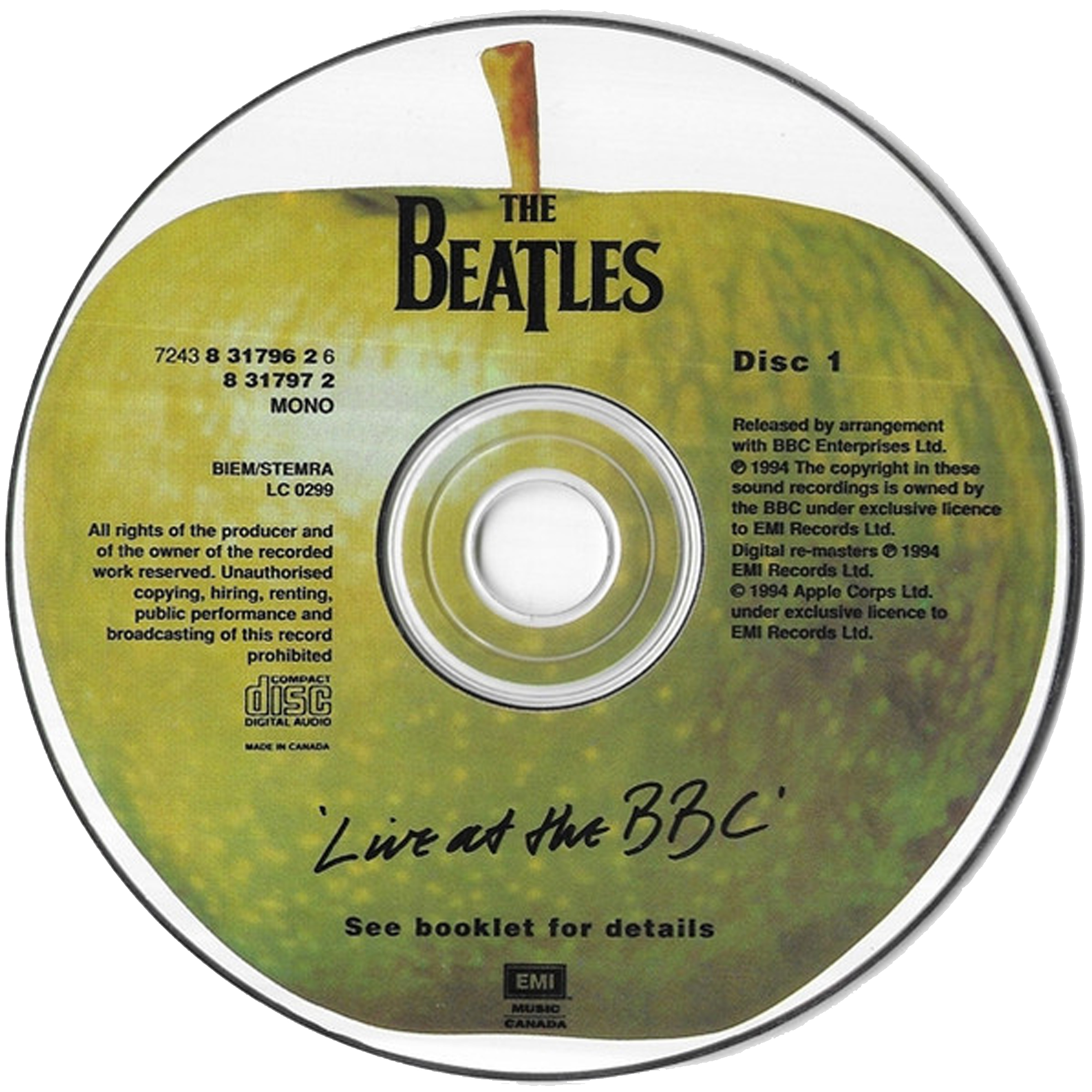Compact Discs (CDs) Variations
At the end of the 1980s, as did the rest of the world, EMI introduced their catalogue on the almighty compact disc and released the complete Beatles catalogue on CD for the first time. The CD releases coincided with (or was a good opportunity to align with) the official worldwide standardization of the Beatles' catalogue, now having the UK formats + Past Masters as the "only official complete picture" (at this point, North American releases became a thing of the past, besides occasional collectors box sets).

As was the case with all the other formats, EMI Canada was still producing domestic releases, but they seem to have imported early CD releases from the USA or Europe (all original releases in Long Boxes from 1987 are imports), only producing their own CDs around what seems to be the early 1990s, through the Cinram and Disque Americ pressing plants. All in all, there appears to be seven main series of CDs produced in Canada (note that Canadian CDs were numbered C2, while USA pressings used the CDP prefix instead, many of which were imported to Canada at the time. The Canadian pamphlet used USA artwork and shows CDP numbered CDs).

1. Disque Americ pressings (Plain Text Name) - Circa 1989-1997
Early Beatles CDs were imported from either the EU (mostly Germany) or the USA, but the first Canadian copies pressed around 1989-1990 were manufactured by Disque Americ (and Cinram). These early Disque Americ CDs feature the name of the company in plain text pressed in the matrix area. These seem to be found until around 1997.
Some titles (Help! and Rubber Soul) are quite sought after by collectors worldwide today because these two "D.A." pressings featured the (wrong) original LP mix, while they were supposed to use the George Martin 1987 remix like the rest of the world.
2. Cinram pressings (Plain Text Name) - Circa 1989-1997
Early Beatles CDs were imported from either the EU (mostly Germany) or the USA, but the first Canadian copies pressed around 1989-1990 were manufactured by Cinram (and Disque Americ). These early Cinram CDs feature the name of the company in plain text pressed in the matrix area. These seem to be found until around 1997.
Some titles (Help! and Rubber Soul) are quite sought after by collectors worldwide today because these two "D.A." pressings featured the (wrong) original LP mix, while they were supposed to use the George Martin 1987 remix like the rest of the world.
3. Disque Americ pressings (Logo Name) - Circa 1997-2009
Disque Americ continued to sporadically press Beatles CDs as late as 2009, and these newer Disque Americ CDs feature the company logo pressed in the matrix area. This new logo possibly appeared in 1993 when Disque Americ became jointly owned by MPO and Transcontiental. These have been reported to also carry the wrong "Rubber Soul" and "Help!" mixes (but this needs to be confirmed).
4. Cinram pressings (Logo Name) - Circa 1997-2009
Cinram continued to sporadically press Beatles CDs up to 2009, and these newer Cinram CDs feature the company logo pressed in the matrix area. These have been reported to also carry the wrong "Rubber Soul" and "Help!" mixes (but this needs to be confirmed).
5. EMI pressings - 1995-2007
In 1995, production mostly moved in-house, and feature EMI markings near the spindle hole. This is a common variation and it was produced until 2007 when the facility was closed. The EMI CDs were often made from a glass master produced in Jacksonville (JAX) that was sent to Canada for production.
6. Modern Apple releases (D.A, Cinram or EMI) - Circa 1993-2009
1993 marked the "return" of Apple, with a new remastered release of the red and blue compilation albums. The following years saw a series of new Beatles album, Live at the BBC, the Anthology series, Yellow Submarine Songtrack, Beatles 1, Let It be... Naked and Love, all produced in Canada. After this, CDs were imported to Canada from either the USA or the EU. These are either EMI, Cinram, or Disque Americ, depending on demand and pressing plant availability.
7. Modern Remasters (Cinram "3rd Generation") - 2009 - Present
The 2010s gave way to a series of remastering of the Beatles (and solo) catalogue. Every album was available either as a box set or as individual albums. The 2009 Beatles box set featured CDs pressed in Canada and a CD of all mini documentaries compilation. These CDs have US artwork, but CDs are made in Canada by Cinram (3rd "new" generation of Cinram CD pressings). To date, this is still the main CD pressing variation when releases are not imported, but locally made.






